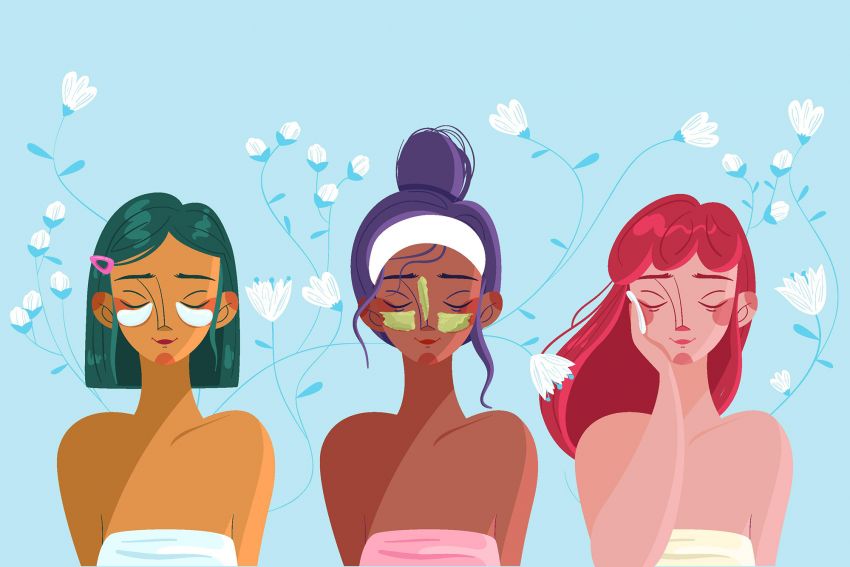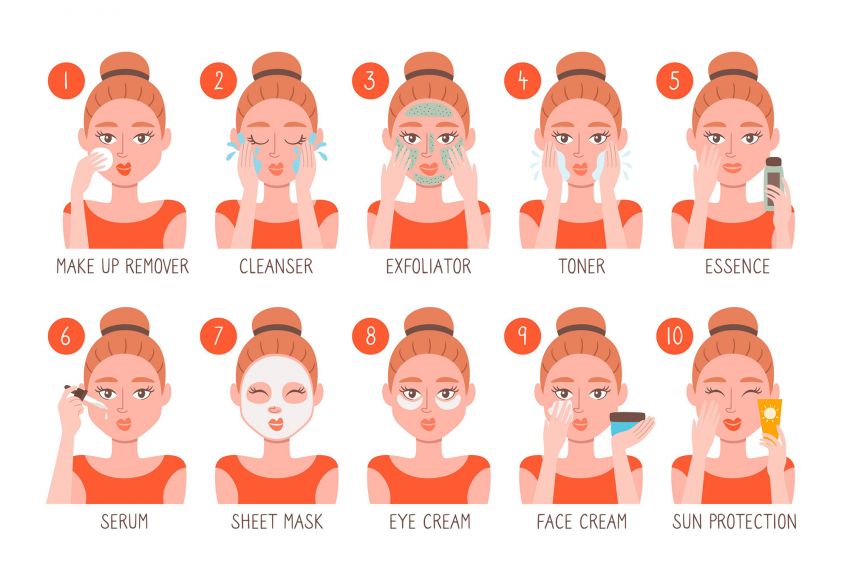By now, pretty much everyone has heard of K-beauty (short for Korean beauty). You’ve probably heard about the famous 10-step Korean skincare routine, and maybe you’ve even thought about giving it a try.
But the world of Korean beauty is vast, and you’ve likely got some questions. What makes it different? Why is it so popular? And, most importantly, do you really have to do all ten steps?
Today we’re going to crack the mystery of Korean beauty. Here’s what you need to know about the history of K-beauty, where to get started, and why you should give it a try.
Table of Contents: Cracking The Korean Beauty Hack: What To Know + Why Try
So, what is K-beauty?
Of course, K-beauty products originate from Korea, but there’s more to it than that. These products are created with the fundamentals of Korean beauty in mind. Here’s what that means:
K-beauty products are designed to nurture the skin for long-term benefits.
We’ve all heard about a peel or treatment that’s supposed to produce miraculous results “in just one treatment.” The problem with this approach is that the results don’t last. Even worse, the product could be damaging to the skin.
Look at it this way, you might lose weight on a crash diet, but it’s harmful to the body, and the results don’t last. You’ll probably gain the weight back when you go off the diet because you have mostly just lost water weight.
Well, that’s not K-beauty. Korean beauty philosophy focuses on nurturing the skin with a consistent regimen geared toward your personal goals. It’s a bit like following a healthy diet and exercising regularly to achieve results that last for a long time.
K-beauty’s gentle approach is all about achieving healthy skin that glows because it’s been nourished and hydrated.
Korean beauty is all about you.
One of the leading philosophies of K-beauty is that everyone’s skin is different. Understanding your own skin and customizing your routine as you go is crucial but not complicated!

Think about the products you’re using now. Do they leave your skin dried out or irritated? Do they cause a reaction or make you break out. Make a note of the ingredients in that product and begin keeping track of what works for you and what doesn’t. Over time you’ll have a pretty good picture of what your skin doesn’t and does like.
In K-beauty, you’ll find moisturizers and other products that are designed to be buildable since each person’s skin requires a different level of hydration. You’ll discover essences that add hydration in small increments so you can apply one layer or 10, depending on what your skin needs on a given day.
For example, maybe you just got off an overseas flight, and your skin is parched. Layer on the essence and seal it in with a generous application of moisturizer. The next day when it’s hot, you might only need one layer of the essence and a little bit of moisturizer… or none at all.
It’s all about customization! Learn to assess your skin’s needs each day and adjust your routine accordingly.
K-beauty philosophy is all about incorporating natural ingredients with the latest innovations.
One of the first things you’ll notice about K-beauty products is the unusual ingredients and products. Whether it’s snail mucin, bee venom, bubble masks, or essences, Korean beauty is all about innovation. But they are also all about tried and true, natural ingredients that have been relied on for centuries.

A Brief History of K-Beauty
Today’s K-beauty philosophy comes from traditions that have been passed down for generations. History tells us that Korea was mainly an agricultural society in the past, which required most people to spend their days out in the harsh sun.
So, they found ways to heal and prevent sun damage that are still in use today. Then and now, Korean boys and girls are taught that proper daily skincare and sun protection is just as important as brushing your teeth or eating a healthy diet.
Natural ingredients that were rich in hydration and antioxidants became essential. Botanicals like rice, mung bean, and camellia are still incorporated into today’s beauty products. It’s amazing how much of today’s K-beauty philosophy comes from time-honoured traditions that are still just as effective now as they were centuries ago.
In the 1940s, Korean beauty companies began the modern K-beauty movement, and many of those companies are still in business today. As the industry grew and developed, their new formulas and innovative products featuring tried and true ingredients began to gain popularity worldwide.

The Truth Behind the 10-Step Korean Skincare Routine
Contrary to what you might have been told, the Korean skincare routine doesn’t have to be ten steps. Some days it might be three steps; other days, you might do all ten or even more.
Once again, it’s all about customization and layering according to your individual needs and long-term goals. Each product is chosen according to your skin type, and then the routine is adjusted every day based on your needs.
Here’s what each step does, plus the proper order to apply them:
- Oil cleanser: Dissolves away makeup, dirt, and oil from the surface and deep down into the pores.
- Water cleanser: Gently removes any remaining residue without stripping the skin.
- Exfoliator: Incorporated into the routine whenever your skin needs it, but not usually more than two or three times per week.
- Hydrating toner: Balances the skin’s pH and adds hydration.
- Essence: Applied in layers to hydrate and plump up the skin.
- Serums and Ampoules: Also applied in layers, from the thickest to the thickest serum or ampoule you’re using that day. You might apply just one or several, depending on which issues you’re trying to address.
- Masks: Masks are used as needed to target specific issues, such as dehydration or breakouts.
- Eye cream: The skin around the eyes is very delicate and is usually the first place to show the signs of ageing, so special attention is paid to nourishing and protecting this area.
- Moisturizer: Seals in the previously applied ingredients and protects the skin from environmental pollutants.
- SPF: Sun protection is a must anytime you’ll be exposed to the sun, even if it’s cloudy.

So, where should you start?
Are you ready to give K-beauty a try? Try starting with just the basics.
Everyone can benefit from the water-based cleanser, toner, moisturizer, and SPF in the morning. At night, do a double cleanse, followed by toner and moisturizer.
Choose products that are specifically formulated for your skin type and concerns. Once you’ve got the basics down pat, you can begin adding in the other steps to customize your routine.

















